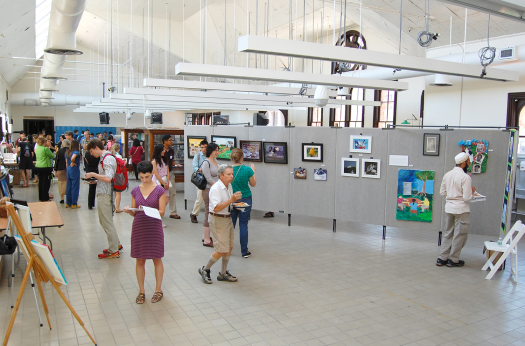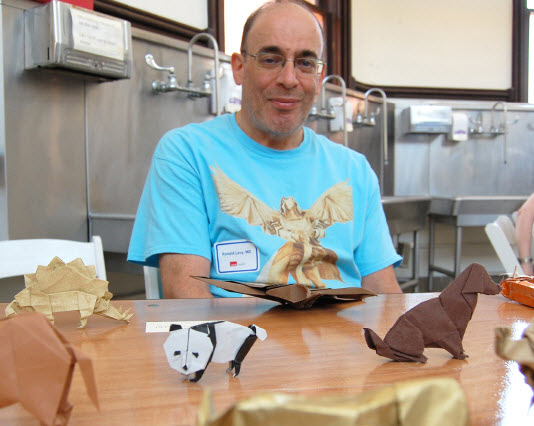
Few things help second-year School of Medicine student Armando Elizondo relax the way music does.
Elizondo plays six different instruments and takes every chance he gets between his studies to craft music as a form of therapy.
“Studying to be a doctor is mentally, physically and emotionally exhausting,” Elizondo said. “So, for me personally, music is a form of healing. I’ve found that when I’m healed, I can better focus on healing others.”
Elizondo was one of dozens of students and faculty members who presented creative works at the fourth annual Artistic Expressions: Mind, Body & Spirit show at Old Red on Aug. 27.
The show, sponsored by The Osler Student Society, the McGovern Academy of Oslerian Medicine and UTMB Arts in Health Professions Education Consortium, is focused on helping medical students and faculty keep their creative fires burning throughout their medical careers.
“We don’t want our students to lose the creative part of themselves when they come to medical school,” Oma Morey, Ph.D., assistant professor of Internal Medicine and senior medical educator and associate member of the Institute for the Medical Humanities at UTMB, said. “We believe keeping that creative spark alive makes a more holistic physician.”
Morey, who is an accomplished artist in her own right and presented a music video during the show, worked with fellow artist Lisa Cain, Ph.D., associate professor of Neurosciences and Cell Biology and also an associate member of the Institute for the Medical Humanities, to start the UTMB Arts in Health Professions Education Consortium and organize the Artistic Expressions show four years ago. There were just a handful of exhibitors during its inaugural year, but this year’s iteration drew 55 students and faculty members and attracted more than 260 visitors who perused the creations.
 Dr. Ronald Levy sits next to his origami creations
Dr. Ronald Levy sits next to his origami creationsOne of the exhibitors was Dr. Ronald S. Levy, professor of Anesthesiology/Anatomy and Neurosciences and director of UTMB’s Patient Simulation Center.
Seated at a table surrounded by intricate origami, Levy said he’s been practicing since the 1960s, adding that he believes one of his folds helped his acceptance to the Sackler School of Medicine in New York City because the topic of origami piqued his interviewer’s interest. Levy, who has learned origami from books, included one of the folds in his thank you letter.
“These were all from single squares of paper without cutting,” Levy said as he described the pieces displayed on the table. “Sometimes, when you’ve been working on a complicated fold for a while it can be frustrating, but when you complete one, that’s a good feeling.”